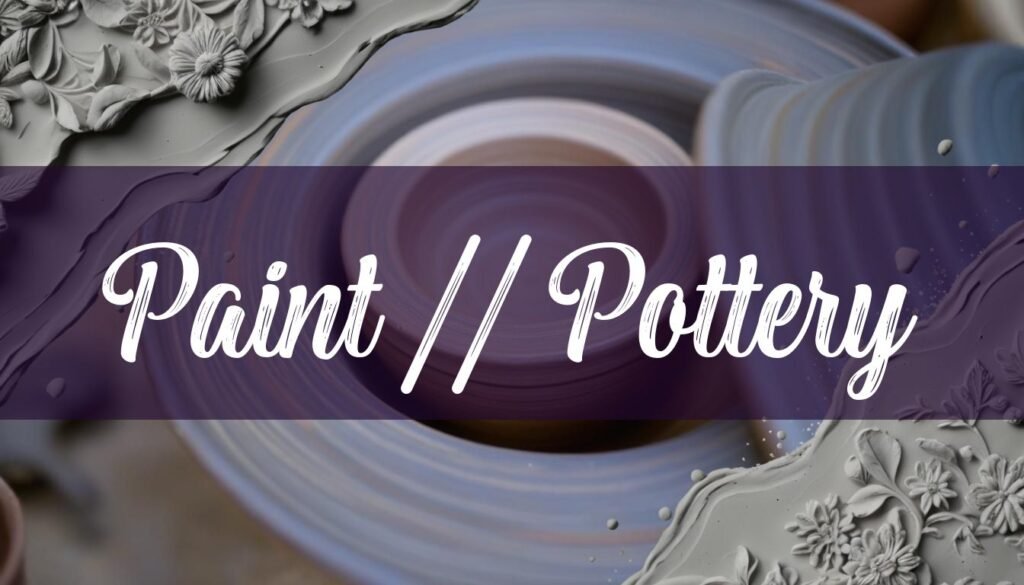Painting over glazed pottery can breathe new life into old pieces or allow for personalized designs on existing ceramics. However, the glossy, non-porous surface of glazed pottery presents a unique challenge for paint adhesion. Unlike painting on bisque-fired pottery, which is porous and readily accepts paint, glazed surfaces require specific preparation and materials to ensure a lasting and vibrant finish. This article will guide you through the process of painting over glazed pottery, from preparing the surface to selecting the right paints and sealing your design for durability.
Preparing the Glazed Surface
The first step to painting glazed pottery is proper preparation. Because glazed surfaces are so smooth, paint struggles to adhere without some encouragement. Start by cleaning the pottery with an alcohol wipe to remove any dirt, oils, or residues that could interfere with paint adhesion. Once the surface is clean, lightly sand the area you plan to paint with fine-grit sandpaper. Sanding creates a slightly rougher texture, giving the paint something to grip onto. After sanding, wipe away any sanding dust with a clean, damp cloth. For an extra layer of insurance, consider applying a primer specifically designed for slick surfaces. Primers create a bonding layer that helps the paint adhere more effectively to the glaze. You may also want to consider unlocking pottery magic with resist techniques for some extra flair.
Selecting the Right Paint
Once the surface is properly prepared, selecting the right type of paint is crucial for a successful and long-lasting result. Several types of paint can be used on glazed pottery, each with its own advantages and disadvantages. Acrylic paints are a popular choice due to their versatility and wide availability. They adhere reasonably well to prepared glazed surfaces, especially when used with a primer. For even better adhesion and durability, consider using specialized ceramic paints, such as DecoArt’s Glass Paint. These paints are formulated to bond with smooth surfaces like glass and glazed ceramics. Enamel paints are another option, known for their durability and glossy finish. They are oil-based and can withstand high temperatures, making them suitable for pottery that will be baked. Spray paint, particularly enamel-based spray paint, can also be used to create a smooth, even finish on glazed pottery. No matter which type of paint you choose, make sure it is compatible with the sealant you plan to use later.
This video demonstrates a great bubble glazing technique:
Applying the Paint
When applying paint to glazed pottery, thin, even coats are key to preventing drips, runs, and poor adhesion. Whether you’re using a brush or spray paint, apply the paint in light layers, allowing each coat to dry completely before applying the next. For brush application, use a soft, high-quality brush and move it in even strokes in the same direction. This will help minimize brushstrokes and create a smoother finish. Depending on the paint and the desired opacity, you may need to apply multiple coats. When using spray paint, hold the can about 8-10 inches from the surface and apply the paint in a sweeping motion, overlapping each pass slightly. If you’re working with glazes, remember that adding gum to the recipe can help the glaze paint on more evenly and dry slower, giving you more control over the application. For intricate designs, consider using paint pens or stencils. Paint pens offer precise control for detailed work, while stencils can help you create clean, crisp lines and shapes. Remember, patience is key – take your time and allow each layer to dry thoroughly for the best results.
Sealing for Durability
To protect your painted design and ensure its longevity, sealing is an essential final step. A clear acrylic spray sealant is a popular choice for sealing painted glazed pottery. Apply the sealant in thin, even coats, following the manufacturer’s instructions. Make sure the paint is completely dry before applying the sealant. For pottery that will be used for food or drink, choose a food-safe sealant. If you’re using specialized ceramic paints like DecoArt’s Glass Paint, you may have the option of baking the pottery for a dishwasher-safe finish. Follow the baking instructions provided by the paint manufacturer. Baking the pottery can create a more durable and permanent bond between the paint and the glaze. If you are using a kiln, be sure to read kiln care 101 maintenance tips for potters.
Painting glazed pottery offers a wonderful way to personalize and revitalize ceramic pieces. While the slick surface presents unique challenges, careful preparation, the right paint selection, meticulous application, and thorough sealing can yield stunning, long-lasting results. Remember to clean and sand the surface, choose appropriate paints, apply thin coats, and protect your design with a sealant. With a little patience and creativity, you can transform ordinary glazed pottery into unique works of art.





